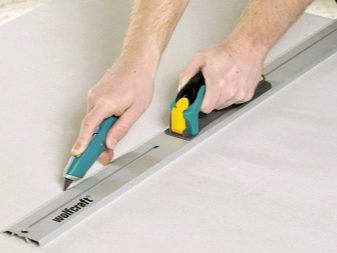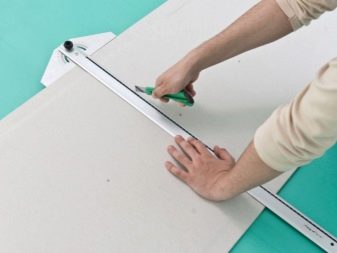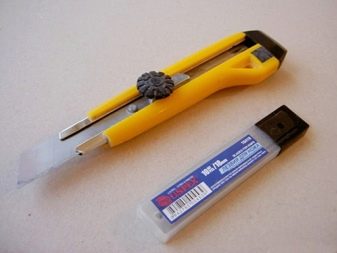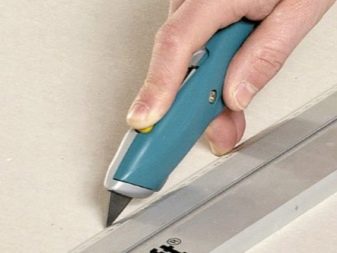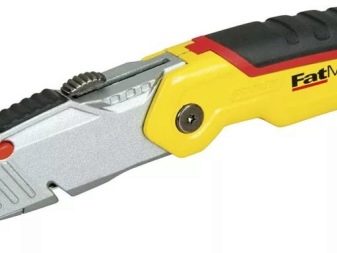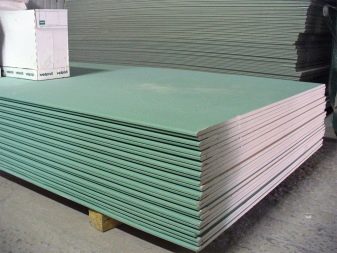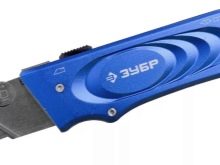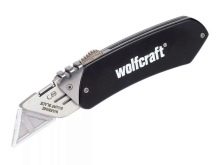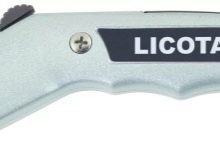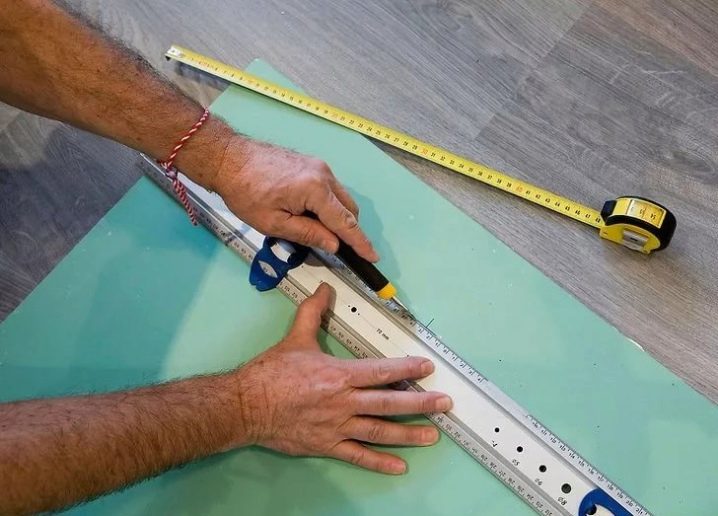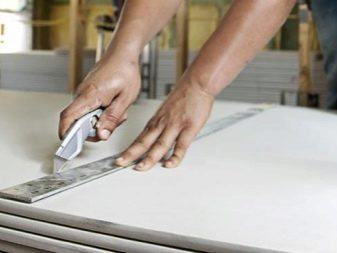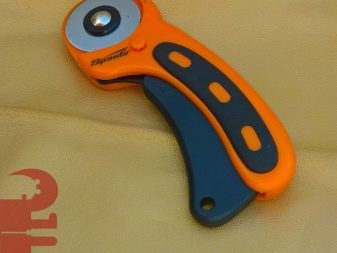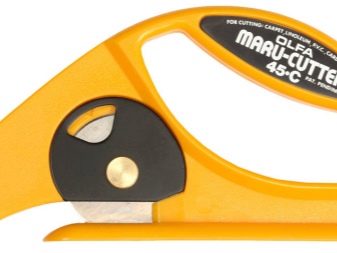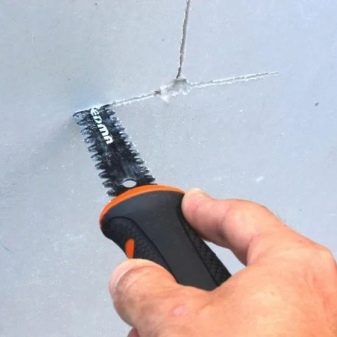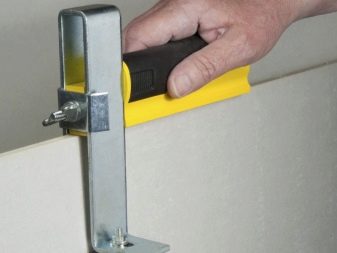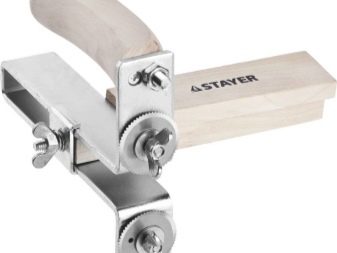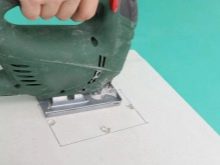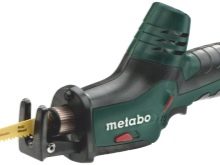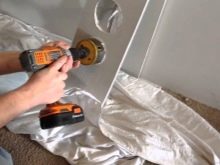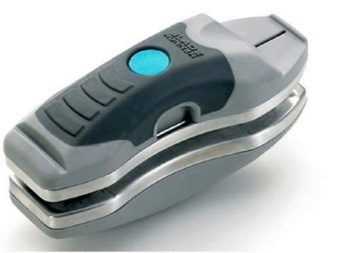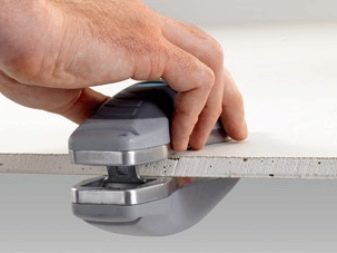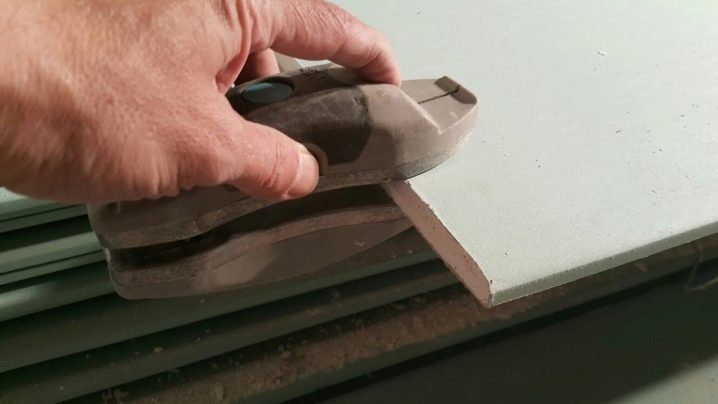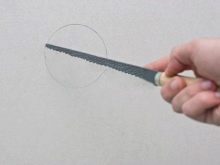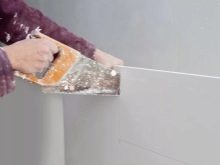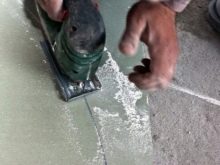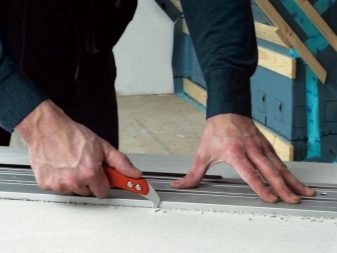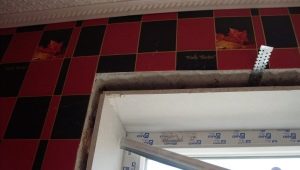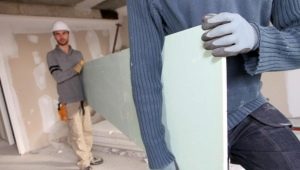How to choose a knife for drywall?
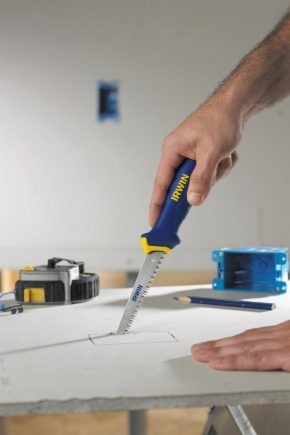
GCR processing is quite simple and can be carried out even without the use of special tools. However, knowing how to choose a knife for drywall will be useful for every master. An easy-to-use tool will greatly facilitate the process of cutting the material and allow you to form a flat edge.
Basic requirements for the tool
Despite the fact that the drywall sheet can be cut with a simple stationery knife, do not neglect professional tools. From the selected device will depend on the quality of cutting, namely the accuracy of the dimensions obtained and the evenness of the edge. In order for plasterboard sheets to be easily cut, the tool blade must be quite thin and at the same time durable.
The most convenient way to work with a special tool that is designed for cutting HL.Specialized knife has a more comfortable handle and durable blade.
When working with such a tool, you can control the pressure and make a very flat cut line.
Kinds
All tools for cutting HL can be divided into two types: manual and electric. Another classification involves the separation of universal and specialized devices. Unlike special tools for gypsum boards, multi-purpose knives can be used not only for working with plasterboard, but also for cutting other materials.
Painting
The knife is also known as wallpaper or clerical. This tool is widely used in repair work for cutting various materials. There are many types of stationery knives, which differ in some characteristics.
For cutting GKL suitable option would be tools with a blade width of 18 and 25 millimeters.
Knives that have a blade width of 18 millimeters, are available in three versions:
- Standard. The cheapest model with a thin blade and a weak body. This knife can perform work only in a small volume.
- Reinforced. Such a modification of the stationery knife is more reliable, unlike the standard versions.
- Professional. This type of knives has a high price compared to other options, due to the quality of the tool.
When working with a wallpaper knife, you must follow a number of rules:
- The blade should not extend more than 10 millimeters from the body. This is necessary for a better and even cutting.
- The thickness of the replaceable blades can vary from 0.3 to 0.6 millimeters. It is better to use options with greater thickness.
- Replacing the blade takes place by removing the small cover from the back of the case.
Stationery knives with a blade width of 25 millimeters have a more rigid blade than the 18 millimeter blade versions. The body of such products is durable.
The handle is often quite massive, which makes working with the tool easier and safer.
Special purpose
Knives with a trapezoid blade belong to the category of special professional tools for working with plasterboard. Such tools have a convenient shape and handle that allows you to perform work in large volumes.The blade of a knife has high rates of rigidity. Cutting tool can not only straight, but curly lines. Depending on the brand, the price of a knife with a trapezoid blade can vary greatly.
It is worth noting that even inexpensive tools have good quality.
The special purpose tools for drywall also include cutters with a measuring tape. The measuring tape and the blade are embedded in the body of such a knife. The cutter-roulette allows you to cut drywall sheets without marking.
With blade blade
Knives with a disk blade are great for cutting drywall in a straight line. With this tool it turns out to produce high-precision cuts. The blade of the knife is quite durable and can withstand heavy loads, which allows you to not worry when working on the force of pressure.
Disk plates are durable and do not require regular replacement.
Hacksaw
Manual hacksaw with fine teeth is convenient to make figured holes in plasterboard sheets. The drywall blade is quite narrow, which allows you to cut holes in sheets already attached to the wall or ceiling.The hacksaw when cutting allows you to get not quite smooth edges of the groove, which is a disadvantage of this tool.
Disc cutter
The disk cutter consists of a body and working elements in the form of two disks, which are opposite each other. Due to the fact that the discs cut the gypsum board from both sides, the cutting quality is perfect.
This tool is only suitable for cutting thin, even strips with a width of no more than 12 centimeters.
Power tools
For the cutting of drywall, electric tools such as electric jigsaw, electric saws and saber saws, a drill or a screwdriver with a special nozzle are used. Electric jigsaws cut through gypsum well, both in a straight line and along a curved line. For cutting fit standard files for working on wood.
Reciprocating saws and electric hacksaws are ideal for cutting thick plasterboard sheets.
To make a hole under the socket or light switch, it is best to use a drill or a screwdriver with a nozzle in the form of an annular cutter.
Blade runner
The Blade Runner cutter is not the cheapest tool for cutting drywall.However, this device has a number of significant advantages over other types of knives. Blade Runner has two sharp blades that are held in the housing with magnets. Blades cut GCR from two sides at once, which allows to get an even cut, while the work time is significantly reduced.
The blades are completely hidden under the body, so working with such a tool is absolutely safe. Unlike a disk cutter, Blade Runner can cut drywall not only into straight narrow strips from the edge of the sheet. It is also possible to cut at an angle, cutting out arcuate and shaped elements.
Cutting with Blade Runner is carried out along the guideline, which can be used for marking with a pencil or tape measure. The line on the cutter must be aligned with the guide, and then hold the tool for marking.
It is worth noting that the tool has a slight drawback. When working with thin sheets of plasterboard, knives in the case can hit each other and be damaged. To prevent the blades from breaking, when cutting thin sheets, the tool must be held with your fingers, preventing the two parts of the body from closing at the exit.
Recommendations for selection
When choosing a knife for cutting drywall sheets, it is necessary to take into account the amount of planned work, as well as the complexity of the cuts created.
- For cutting in a straight line, you can use an ordinary wallpaper knife. It is worth choosing options with a thicker and more rigid blade, otherwise it will often break. The disadvantage of the clerical knife is not quite smooth cutting. The edges of the segments will have to be aligned with other tools.
- For work with plasterboard sheets the most suitable tool will be special professional knives. Before buying a knife, it is advisable to hold the tool in your hands. The ease and quality of cutting will depend on how comfortable the grip is.
To make holes for sockets or electrical appliances, it is best to use a hacksaw with thin teeth. To create shaped holes with more even edges, it will be more convenient to use electrical tools.
How to cut the material?
To make high-quality cutting drywall, it is not enough to have a good tool. Much depends on the accuracy of measurements and cutting techniques. Before starting the main work, the exact marking of the cut should be applied to the surface of the material. Using a tape measure, segments of the required length are measured and the guide lines are drawn with a pencil or a special marker.
Before cutting, the tool used must be checked. The body of the knife should not be damaged, and the blade is well sharpened. If there are unnecessary cuttings of drywall, the serviceability of the tool should be checked for them by making a small cut. When cutting GCR do not need to rush. Movement should be as smooth and slow as possible.
It should be borne in mind that it is not always possible to make a perfectly flat cut. Often, cut elements need additional processing. Therefore, in addition to the knife, at hand should have an additional tool: edge planer and scraper-plane. The edge planer is necessary for chamfering from the end of the plasterboard sheets, which greatly simplifies the jointing and sealing of the gypsum board joints. Planer scraper is used to level the edges.
To learn how to properly cut drywall with a painting knife, see below.
